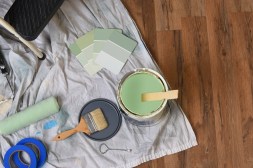Expert Tips on DIY Techniques for Restoring Chipped Wooden Surfaces
Wooden surfaces can often fall victim to chips and scratches, which not only mar their beauty but can also diminish their lifespan. Fortunately, restoring chipped wood is a manageable project with the right techniques and tools. In this article, we will explore expert tips on DIY methods to bring your chipped wooden surfaces back to life.
Assessing the Damage
Before diving into restoration, it’s essential to assess the extent of the damage. Check whether the chip is superficial or if it has penetrated deeper into the wood. Minor chips might only require cosmetic touch-ups, while larger ones may need more extensive repairs. Understanding the type of wood you’re working with will also help in choosing suitable restoration techniques and materials.

Gather Necessary Tools and Materials
To restore chipped wood effectively, gather your tools beforehand. You’ll typically need sandpaper (fine and medium grit), wood filler or wax sticks for smaller chips, a putty knife for applying fillers, wood stain or paint that matches your furniture’s color, and a varnish or sealant for finishing touches. Having these materials handy will make your project smoother and more efficient.
Filling in Chips with Wood Filler
For deeper chips that cannot be sanded down easily, using wood filler is an effective solution. Start by cleaning out any debris from the chip area before applying the filler with a putty knife. Smooth it over so that it’s level with surrounding areas. Allow it to dry completely according to package instructions before proceeding to sanding—this step ensures that you won’t damage surrounding areas when smoothing out.
Sanding for a Smooth Finish
Once your filler has dried thoroughly, take medium-grit sandpaper and gently sand down any raised edges around the filled area until it’s flush with the rest of the surface. Follow up using fine-grit sandpaper to achieve an ultra-smooth finish that matches the original surface texture of your wooden piece.
Staining or Painting Your Restored Area
After sanding down, it’s time to blend in your repair work with matching stain or paint. Use a small brush or cloth to apply stain carefully over the repaired section; this helps ensure even color distribution. Allow it plenty of time to dry before applying any sealants required for protection against future wear-and-tear.
By following these expert tips on DIY techniques for restoring chipped wooden surfaces, you can rejuvenate furniture pieces without needing professional help or spending significant amounts on repairs. Armed with patience and creativity—as well as these straightforward steps—you’ll find satisfaction in bringing new life back into cherished wooden items.
This text was generated using a large language model, and select text has been reviewed and moderated for purposes such as readability.


